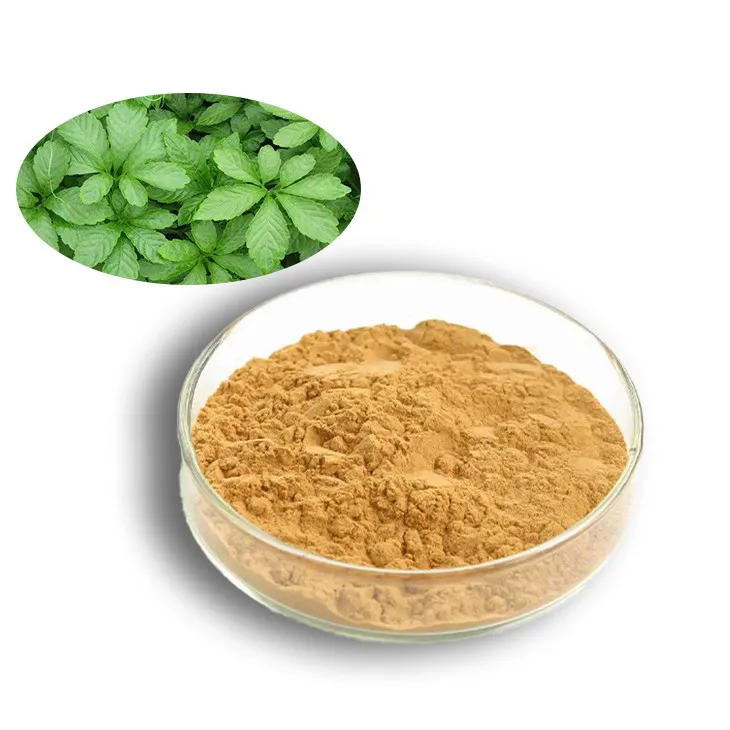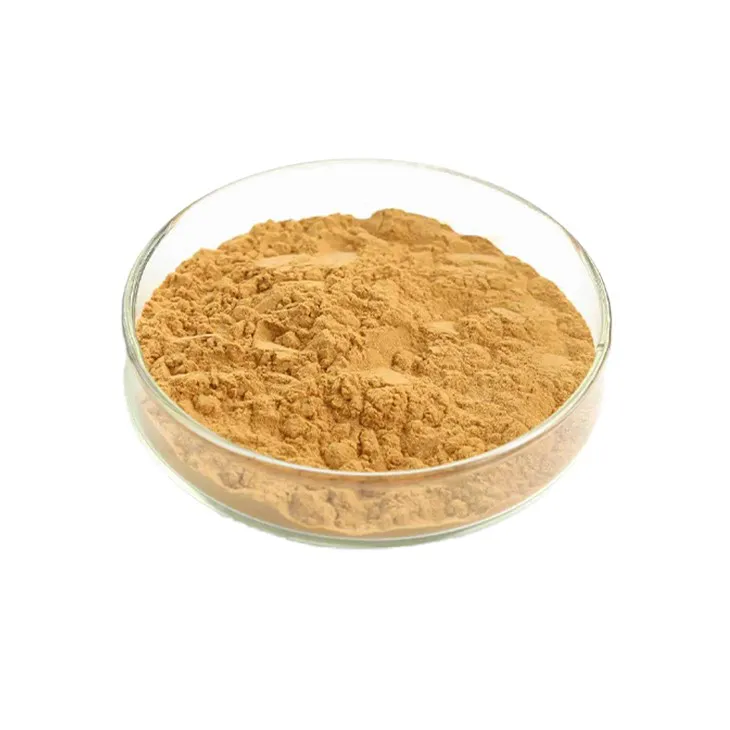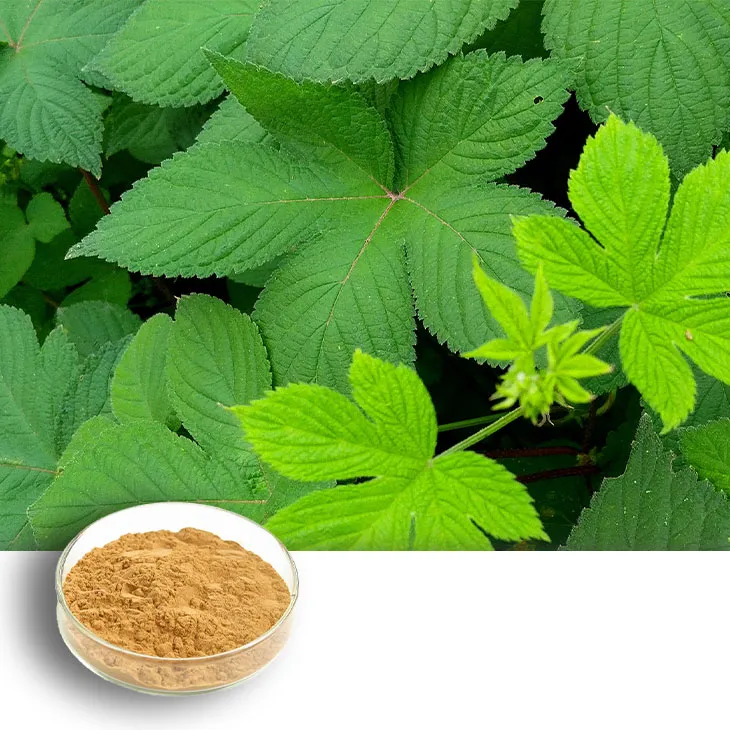- 0086-571-85302990
- sales@greenskybio.com
Active components in Gynostemma pentaphyllum extracts.
2024-11-29

1. Introduction
Gynostemma pentaphyllum, a plant with a long history of use in traditional medicine, has been attracting increasing attention in modern research due to its potential health - benefiting properties. The extracts of Gynostemma pentaphyllum are rich in a variety of active components, which contribute to its diverse pharmacological effects.

2. Alkaloids
2.1 Anti - tumor potential
Alkaloids present in the Gynostemma pentaphyllum extract are of great significance. These alkaloids may have anti - tumor potential. They can interfere with the growth and proliferation of cancer cells through multiple mechanisms. For instance, they are involved in cell cycle regulation. By affecting the checkpoints in the cell cycle, such as G1/S or G2/M transitions, the alkaloids can prevent cancer cells from dividing uncontrollably. Moreover, they can also induce apoptosis in cancer cells. Apoptosis is a programmed cell death process that is often disrupted in cancer cells. The alkaloids can activate the apoptotic pathways, leading to the death of cancer cells.
2.2 Other possible effects
In addition to their anti - tumor effects, alkaloids in Gynostemma pentaphyllum may also have other pharmacological activities. They may play a role in modulating the immune system, enhancing the body's defense against diseases. However, more research is needed to fully understand these potential effects.

3. Trace elements
3.1 Importance of trace elements
The Gynostemma pentaphyllum extract contains various trace elements, which are essential for the normal functioning of the body. Zinc, for example, is involved in numerous enzymatic reactions. It is a cofactor for many enzymes that are crucial for DNA synthesis, protein metabolism, and cell division. Iron is another important trace element. It is mainly involved in oxygen transport as a component of hemoglobin. Additionally, iron is also necessary for the function of some enzymes in the electron transport chain. Selenium is also present in the extract. Selenium has antioxidant properties and is involved in the regulation of thyroid hormone metabolism.
3.2 Contribution to metabolic regulation
The presence of these trace elements in the Gynostemma pentaphyllum extract may contribute to overall metabolic regulation. They can ensure the proper functioning of enzymes involved in various metabolic pathways, such as glycolysis, the Krebs cycle, and fatty acid metabolism. By maintaining the balance of these metabolic processes, the trace elements in the extract may help to promote overall health.

4. Phenolic compounds
4.1 Antibacterial and antiviral activities
The phenolic compounds in the Gynostemma pentaphyllum extract are notable for their antibacterial and antiviral activities. These activities can help the body resist infections. In terms of antibacterial activity, phenolic compounds can disrupt the cell membranes of bacteria, interfere with their metabolic processes, and inhibit their growth and reproduction. Regarding antiviral activity, they can interact with the viral envelope or viral proteins, preventing the virus from attaching to host cells or interfering with the viral replication process.
4.2 Role in maintaining health
By exerting their antibacterial and antiviral activities, phenolic compounds in the extract can help the body maintain a healthy state. They can reduce the risk of infections, which are often the cause of various diseases. Moreover, phenolic compounds may also have antioxidant properties, which can scavenge free radicals in the body and protect cells from oxidative damage.

5. Other active components
5.1 Saponins
Saponins are another group of active components in Gynostemma pentaphyllum extracts. They have a variety of pharmacological effects. Saponins can lower blood lipid levels by interfering with lipid metabolism. They can also have anti - inflammatory effects. Inflammatory processes are involved in many diseases, and the anti - inflammatory properties of saponins may help to prevent or treat these diseases.
5.2 Flavonoids
Flavonoids are widely distributed in plants, and Gynostemma pentaphyllum is no exception. Flavonoids in the extract may have antioxidant, anti - inflammatory, and cardiovascular - protective effects. They can scavenge free radicals, reduce inflammation, and protect the cardiovascular system by improving endothelial function and reducing blood pressure.
6. Conclusion
In conclusion, Gynostemma pentaphyllum extracts are rich in a variety of active components, including alkaloids, trace elements, phenolic compounds, saponins, and flavonoids. These components contribute to the diverse pharmacological effects of the extract, such as anti - tumor, antibacterial, antiviral, metabolic regulation, and health - promoting effects. However, further research is still needed to fully understand the mechanisms of action of these components and to develop more effective applications based on Gynostemma pentaphyllum extracts.
FAQ:
What are the main active components in Gynostemma pentaphyllum extracts?
The main active components in Gynostemma pentaphyllum extracts are alkaloids, trace elements (such as zinc, iron, and selenium), and phenolic compounds.
How do the alkaloids in Gynostemma pentaphyllum extracts show anti - tumor potential?
The alkaloids can interfere with the growth and proliferation of cancer cells by affecting various cellular processes such as cell cycle regulation and apoptosis induction.
What role do the trace elements in Gynostemma pentaphyllum extracts play?
The trace elements in the extract, like zinc, iron, and selenium, are essential for many enzymatic reactions in the body and may contribute to overall metabolic regulation.
What are the functions of phenolic compounds in Gynostemma pentaphyllum extracts?
Phenolic compounds in the extract are known for their antibacterial and antiviral activities, which can help the body resist infections and maintain a healthy state.
Can the active components in Gynostemma pentaphyllum extracts work together?
There is a possibility that the active components can work together. For example, the overall effect of the extract on maintaining health may be a result of the combined actions of alkaloids, trace elements, and phenolic compounds, but more research is needed to fully understand their interactions.
Related literature
- Analysis of Active Components in Gynostemma pentaphyllum Extracts and Their Biological Activities"
- "The Role of Alkaloids in Gynostemma pentaphyllum Extracts in Anti - tumor Research"
- "Trace Elements in Gynostemma pentaphyllum: Importance and Functions"
- "Antibacterial and Antiviral Properties of Phenolic Compounds in Gynostemma pentaphyllum Extracts"
- ▶ Hesperidin
- ▶ citrus bioflavonoids
- ▶ plant extract
- ▶ lycopene
- ▶ Diosmin
- ▶ Grape seed extract
- ▶ Sea buckthorn Juice Powder
- ▶ Beetroot powder
- ▶ Hops Extract
- ▶ Artichoke Extract
- ▶ Reishi mushroom extract
- ▶ Astaxanthin
- ▶ Green Tea Extract
- ▶ Curcumin Extract
- ▶ Horse Chestnut Extract
- ▶ Other Problems
- ▶ Boswellia Serrata Extract
- ▶ Resveratrol Extract
- ▶ Marigold Extract
- ▶ Grape Leaf Extract
- ▶ blog3
- ▶ blog4
-
The best organic quercetin.
2024-11-29
-
Nature's Bounty Vitamin K2
2024-11-29
-
Chinese Saffron Extract Powder Factory.
2024-11-29
-
Cactus Extract Supplier
2024-11-29
-
Optimal Bioavailability of Vitamin C.
2024-11-29
-
Fenugreek Extract Powder
2024-11-29
-
Giant Knotweed Extract
2024-11-29
-
Bilberry Extract
2024-11-29
-
Resveratrol extract
2024-11-29
-
Sea buckthorn oil
2024-11-29
-
Baicalin
2024-11-29
-
Okra Extract
2024-11-29
-
Citrus Aurantii Extract
2024-11-29
-
Aguaje Extract
2024-11-29
-
Gynostemma pentaphyllum extract
2024-11-29




















